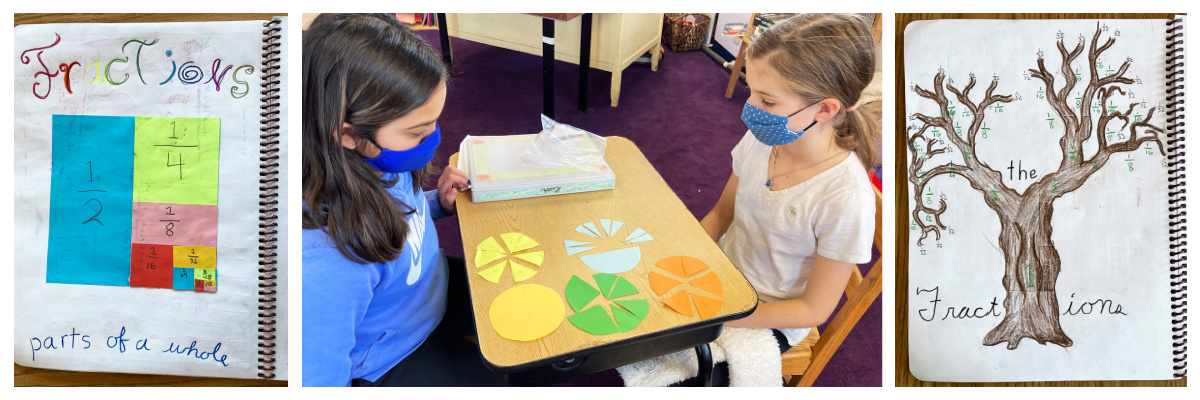By Jennifer Holt, Fourth Grade Teacher
Fostering a sense of wholeness in our community and classroom is foundational to Waldorf Education, and this year is certainly no different. In the Fourth Grade, we are one whole class! And yet, we are divided, almost ½ and ½, into two pods. One of the main topics in mathematics for the fourth grade is fractions. Fractions exist in our everyday vernacular. We share by giving half of something to a friend, we use fractions in measuring while cooking, and find the fractions of time when we clap to the beat of music. By the fourth grade, children have developed an initial sense for fractions, but now we can begin to understand their meaning.
Beginning with the whole, we discuss what is intrinsically one whole and if divided, would not equal the sum of its parts: the sun, a dollar bill, each unique individual fourth grader. We then use manipulatives that we can divide and make into fractions. Food is a concrete example in which to create fractions and provides a great time to share. For this block, we used our imaginations to taste a pan of brownies which we divided into fraction portions, and I have promised them another pan of brownies when it is safe to share. I’m sure they will hold me accountable! The students use their hands to fold and cut paper, labeling the parts of the whole as we go along. To find fractions in space, we jump on number lines to find the half-way point between 0 and 1. There are so many numbers in between! In this way, we build an understanding through the body of ½ , ¼, as well as mixed numbers such as 2 ½. Furthermore, we find the fractions of time through musical notation and clapping on the whole beats, half beats, quarter and sixteenth beats. Along the way, we begin to add and subtract fractions, building confidence as we move towards more abstract constructs.
Fractions are arguably one of the most complex mathematical concepts that are brought to elementary students. This is why we work with many different kinds of manipulatives with lots of variation as well as repetition. I have found that fractions can cause some confusion. The method of letting material rest through a night of sleep is especially true with this work. I am amazed at how students can be perplexed by a new mathematical concept on the day it is introduced, and then come to an understanding of it the next day or two.
Fourth grade is a time when children naturally begin to differentiate. The early grades find integration through their circle times, while middle schoolers develop their capacity to analyze their world through physics and discussions on history and social changes through the eras.
Differentiation is important to the development of the fourth and fifth grader. As they begin to understand the world around them, they note the differences and likeness of their surroundings, community, and even themselves. Fourth graders begin to notice and comment how they are different or unique from their peers, while still reveling in how they are the same. And as they are part of the whole—their whole family, class, school community and glorious world—each child brings their own individualism. And that is where the math doesn’t quite add up, for we certainly are greater than the sum of our parts.


